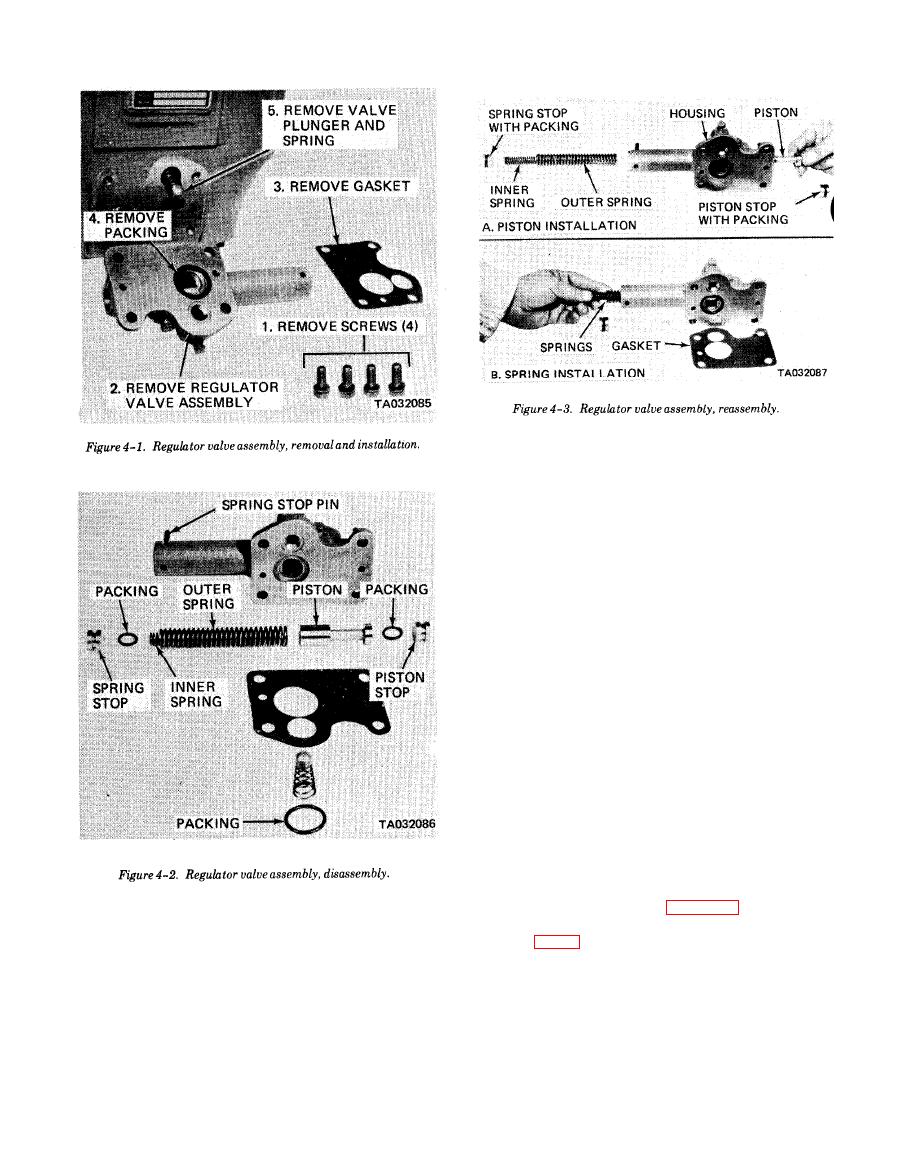 |
|||
|
|
|||
|
|
|||
| ||||||||||
|
|
 TM 10-3930-634-34
(2) Discard all gaskets and packing. Replace with
new parts.
e. Inspection.
(1) Inspect charge pump drive shaft and driven
shaft for damaged splines. If splines are damaged, re-
place the shaft(s).
(2) Inspect mating surfaces for burrs, nicks or
scratches. Remove burrs with a fine soft stone, being
careful not to damage the surfaces.
(3) Inspect springs for evidence of permanent set,
worn or broken condition. Replace if any of these de-
fects are found.
(4) Inspect all preformed packing and gasket mat-
ing surfaces for worn, nicked, or burred condition
which would not allow proper sealing. Replace any de-
fective part.
(5) Inspect threaded openings and hardware for
damaged threads. Chase damaged threads with the
correct size tap or die. Replace all damaged hardware.
f. Reassembly.
(1) Immerse all parts in clean transmission oil
prior to reassembly (refer to current lubrication order).
(2) Apply a thin coat of permatex no. 2 or equiva-
lent on the outer diameter of shaft seals to assure an
oil tight fit.
(3) Reassembly the charging pump in reverse or-
der of disassembly as shown in figure 4-5.
(5), and gasket (6).
g. Installation. Install the charging pump in reverse
(3) Remove three springs (7), packing (8), and two
of removal (fig. 4-4). Ensure that gasket has been im-
backup washers (9).
mersed in clean transmission oil.
(4) Remove two thrust plates (10 and 11), drive
shaft (12), and driven shaft (13).
4-4. Impeller and Oil Baffle
(5) Remove two rear thrust plates (14 and 15)
a. General. The impeller is the input element of the
from pump body (16).
torque converter assembly. It is driven by the engine.
d. Cleaning.
The turbine is the output element, driving the output
(1) Clean all metal parts with cleaning solvent
shaft and is located behind the impeller cover. These
P-D-680 and dry using compressed air.
|
|
Privacy Statement - Press Release - Copyright Information. - Contact Us |